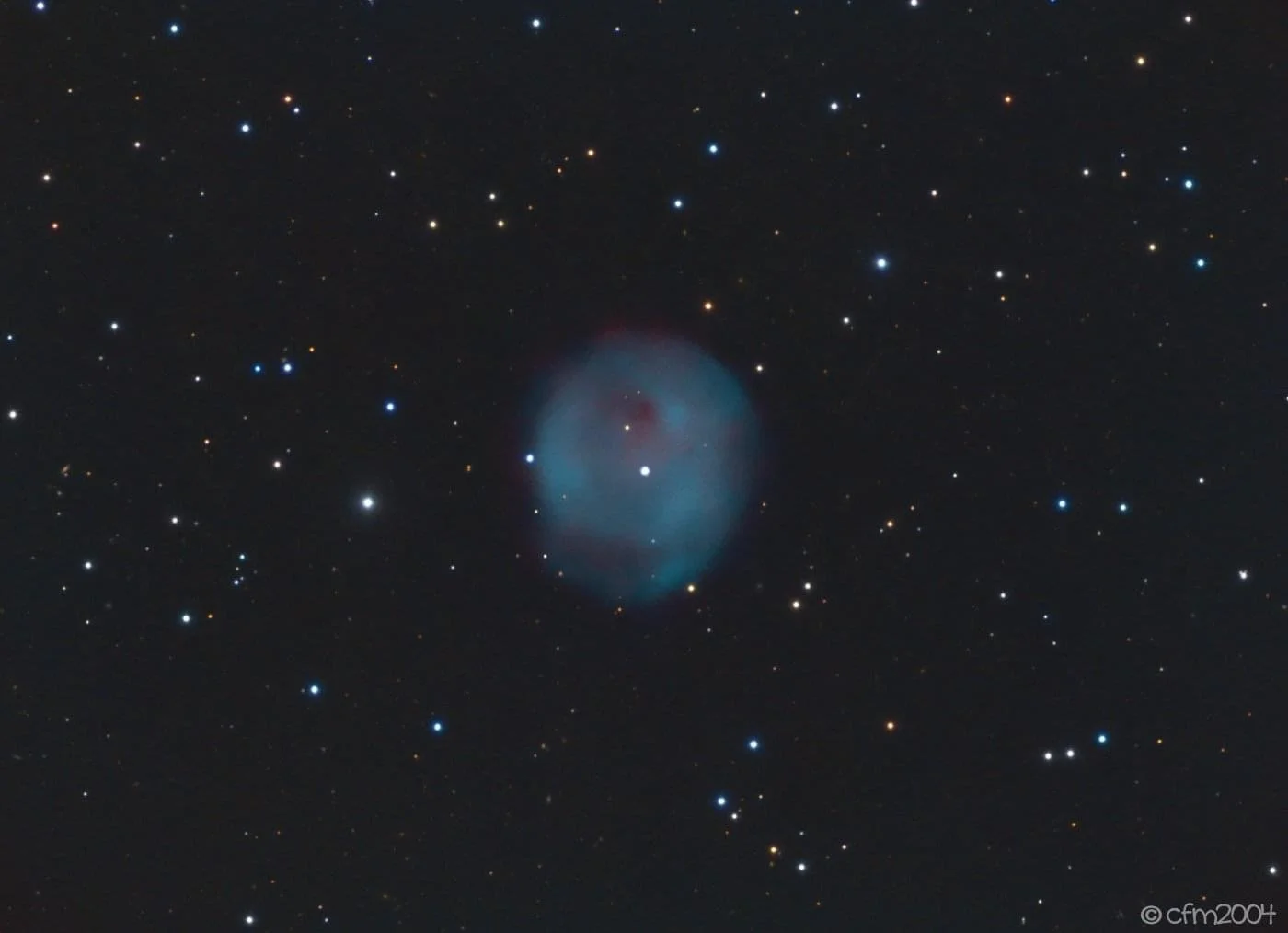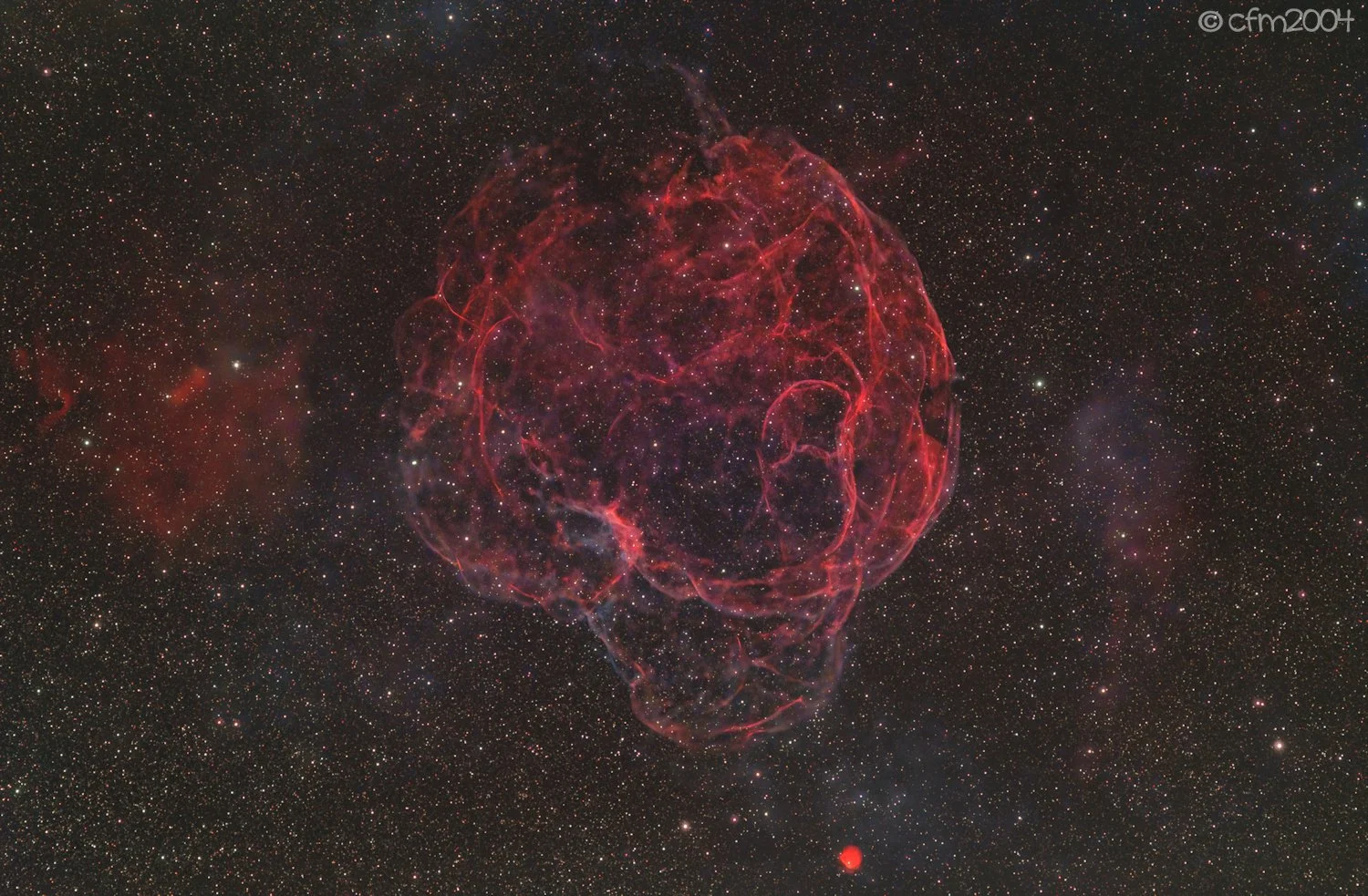
AAPOD2 Image Archives
LoTr5
LoTr5 is a large, weak planetary nebula in the constellation of Chioma Berenice. LoTr 5 has the highest galactic latitude of any known planetary nebula, being only 1.5 degrees from the Galactic North Pole.
March 2021/ March 2022
Location: San Romualdo - Ravenna
Technosky Apo 130/900
Avalon M1 - QHY5III 174M on OAG Celestron
CCD QSI 520wsi cooled -20
Astrodon RGB GenII I-Series and Narrowband 5nm Filters
HA-OIII-RGB: H-alpha 44x15min, OIII 35x15min, R 30x5min, G 26x5min, B 30x5min
Acquired: MaximDL5 - Calibrated with Dark, Bias and Flat.
Processing: MaximDL5, Astroart8,Starnet2, Paint Shop Pro2022, Plugin Topaz and Nik.
Copyright: Cristina Cellini
SH2-240 Spaghetti Nebula
Image Description and Details :January/February 2022
Location: San Romualdo - Ravenna (Italy)
Samyang 135mm F/4 on Avalon M1
Celestron OAG with QHY5III 174M
QHY294C cooled -25 - Optlong L-Extreme filter - 111x10' images
ASI294C - Optlong L-Extreme filter 72x5min. images
Acquired with: SharCap - Calibrated with Dark and Flat
Processed with: DeepSkyStacker4, MaximDL5, Astroart8, Startools1.8, Paint Shop Pro2021, plug-in Topaz and Nik.
Copyright: Cristina Cellini and Paolo Baldoni
comet c / 2017 T2 Panstarrs
This is the comet c / 2017 T2 Panstarrs, imaged thru its passage of sh2- 205.
Based on the absolute magnitude published for this comet by the British Astronomical Association's Comet Section, it is estimate that it may be around mag 7 at perihelion.
Comet C/2017 T2 (PANSTARRS) will make its closest approach to the Sun, at a distance of 1.61 AU.
From BAA….C/2017 T2 (PANSTARRS) was discovered at 20th magnitude in 2017 September when it was it was 9.3 au from the Sun. It is heading for a perihelion at q=1.6 au in early 2020 May. The comet is currently in conjunction but it was apparently brightening rapidly when last seen in April. It should become visible from the UK in mid July very low in the morning sky as it moves slowly NE in Taurus. By then it will be 3.8 au from the Sun and 4.5 au from the Earth. It moves higher in the sky and will be visible throughout the autumn, winter and spring as a circumpolar object and it remains well placed in Ursa Major at perihelion. Magnitude estimates through the late summer and autumn should help to constrain the lightcurve.
Copyright: Cristina Cellini




